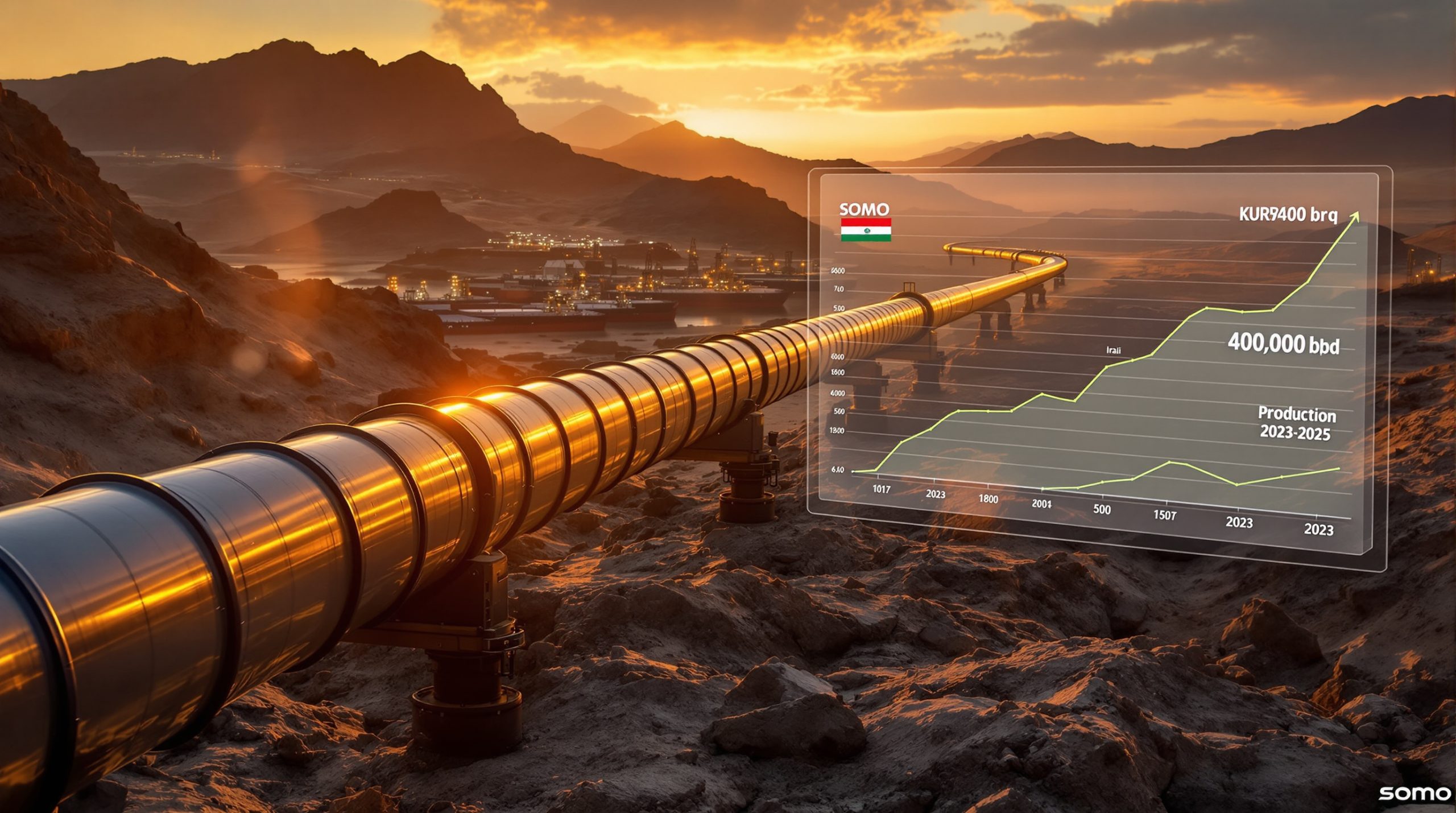Understanding Today's Oil Market Dynamics
The global oil market continues to experience significant volatility in 2023, with WTI crude currently trading at $65.39 per barrel, up 1.58%, while Brent crude sits at $68.16, showing a 1.52% increase. These price movements reflect the complex interplay of geopolitical tensions, inventory levels, and market sentiment that drive crude oil prices today. The energy landscape remains particularly sensitive to developments in the Middle East and shifting global demand patterns.
Recent ceasefire discussions between Iran and Israel have temporarily eased some market concerns, contributing to the current price stabilization after earlier spikes following U.S. strikes on Iranian targets. This delicate balance highlights how quickly crude oil prices today can shift based on geopolitical developments.
How Do Different Oil Benchmarks Compare?
Understanding the relationship between various oil benchmarks provides crucial insight into regional supply-demand dynamics and transportation economics. Each benchmark represents crude with different characteristics, which significantly impacts pricing.
Major Global Crude Oil Benchmarks
| Benchmark | Current Price | Change | Percentage |
|---|---|---|---|
| WTI Crude | $65.39 | +$1.02 | +1.58% |
| Brent Crude | $68.16 | +$1.02 | +1.52% |
| Murban Crude | $68.67 | +$0.83 | +1.22% |
| Louisiana Light | $71.86 | $0.00 | 0.00% |
Regional oil benchmarks show varying performance, with Middle Eastern grades like Murban trading at a premium to WTI, highlighting the importance of quality differentials and geographic factors in pricing. The price spread between benchmarks provides valuable insights into regional supply-demand dynamics and transportation economics.
The WTI-Brent spread, currently around $2.77 per barrel, reflects transportation costs, quality differences, and regional supply conditions. This differential has narrowed compared to historical averages, indicating improving export capabilities from the U.S. Gulf Coast terminals.
What's Driving Current Oil Price Movements?
Crude oil prices today are responding to several key factors, with inventory data and geopolitical tensions playing particularly significant roles in the current market environment.
Recent Inventory Data Impact
The latest EIA report shows a significant 5.8 million barrel decrease in U.S. crude inventories, bringing commercial stockpiles to 415.1 million barrels—approximately 11% below the five-year average. This substantial drawdown exceeds analyst expectations of a 600,000-barrel reduction and supports the current price rally.
Additional inventory highlights include:
- Gasoline inventories: 2.1 million barrel decrease
- Distillate inventories: 4.1 million barrel reduction (now 20% below five-year average)
- Total product supplied: 20.0 million barrels per day (down 1.6% year-over-year)
These inventory figures suggest underlying strength in petroleum demand despite economic concerns, providing fundamental support for crude oil prices today.
Geopolitical Tensions and Supply Concerns
Middle East tensions continue to influence market sentiment, with recent developments between Iran and Israel creating uncertainty around potential supply disruptions. The strategic Strait of Hormuz remains a focal point for market participants, as approximately 20% of global oil supply passes through this critical chokepoint.
"Closure of the Strait remains unlikely despite its strategic importance, but even the threat creates a significant risk premium in current prices," noted the Eni CEO in a recent Oilprice.com analysis.
Oil tankers operating in the Strait are proceeding with caution, implementing additional security measures that may impact delivery schedules and transportation economics. Any escalation could quickly translate to higher crude oil prices today, particularly if shipping insurance premiums rise substantially.
How Are Different Oil Grades Performing?
The performance of various crude oil grades provides insight into regional market conditions and refinery preferences. Quality differentials between light/heavy and sweet/sour crudes have significant implications for refining margins.
OPEC Blends Performance
| Oil Grade | Price | Change | Percentage |
|---|---|---|---|
| Opec Basket | $68.71 | -$7.48 | -9.82% |
| Iran Heavy | $65.75 | -$7.95 | -10.79% |
| Basra Light | $71.69 | -$3.60 | -4.78% |
| Saharan Blend | $68.71 | -$8.14 | -10.59% |
North American Grades Performance
| Oil Grade | Price | Change | Percentage |
|---|---|---|---|
| Canadian Crude Index | $53.57 | -$1.23 | -2.24% |
| Western Canadian Select | $52.02 | -$4.14 | -7.37% |
| Sweet Crude | $58.62 | -$4.14 | -6.60% |
| Eagle Ford | $60.85 | -$4.14 | -6.37% |
The significant price differentials between various grades reflect quality characteristics, transportation costs, and regional refining capabilities. Heavier, sour crudes typically trade at discounts to lighter, sweeter benchmarks due to higher processing requirements. Western Canadian Select's wide discount of over $13 per barrel to WTI highlights the ongoing transportation constraints for Canadian producers.
These differentials are particularly important for refiners, as they directly impact crack spreads and overall profitability. Refiners with complex configurations can take advantage of these discounts to improve margins when processing heavier crude grades.
What Are Market Analysts Forecasting?
Professional forecasts provide valuable context for understanding potential crude oil price trajectories, though investors should recognize the inherent uncertainty in such predictions.
Goldman Sachs has issued a warning that Brent crude could potentially surge to $110 per barrel if Middle East tensions escalate further, particularly if there are disruptions to shipping through the Strait of Hormuz. This scenario represents a significant upside risk to current prices, though it remains contingent on geopolitical developments.
Market analysts are closely monitoring several key factors:
- Geopolitical premium – Currently estimated at $3-5 per barrel in crude oil prices today
- Inventory trajectories – Continued draws could further support prices
- OPEC+ compliance – Production discipline remains crucial for market balance
- Demand indicators – Economic data from China, Europe, and the U.S. will influence price outlook
The American Petroleum Institute (API) and Energy Information Administration (EIA) data continue to provide crucial insights for traders, with recent inventory draws supporting the bullish case for oil prices in the near term.
Disclaimer: Oil price forecasts involve significant uncertainty and should not be the sole basis for investment decisions. Multiple scenarios should be considered when evaluating energy market positions.
How Are Production Trends Affecting the Market?
Production developments across major oil-producing regions continue to shape market dynamics and influence crude oil prices today.
Key Production Developments
- Canada's oil sands production is projected to reach record highs in 2025, with several major expansion projects moving forward despite environmental concerns
- Russia is boosting exports of crude to China in July, reflecting the ongoing realignment of global oil trade patterns
- OPEC production impact remains central to global supply management, though compliance rates vary among member countries
- U.S. shale production continues to show resilience despite environmental pressures, with operators focusing on capital discipline and shareholder returns
These production trends highlight the complex balance between traditional and emerging oil producers, with geopolitical alliances increasingly influencing global energy trade patterns. The gradual shift in U.S. production philosophy from growth-at-all-costs to capital discipline has helped stabilize the market compared to previous boom-bust cycles.
Regional Production Economics
The economics of production vary dramatically across regions:
- U.S. shale: Break-even prices typically range from $35-55 per barrel, depending on basin quality
- Canadian oil sands: New projects generally require $65+ per barrel for economic viability
- OPEC conventional: Production costs as low as $10-25 per barrel in core Middle East fields
- Offshore developments: Deep water projects often need $50+ per barrel sustained prices
These economic realities create natural "price floors" and "production ceilings" that help moderate extreme price movements over time, though short-term crude oil prices today can still experience significant volatility.
What's Happening with Refined Products?
Refined product markets show varying trends that provide important insights into overall petroleum demand and potential future movements in crude oil prices today.
Refined product markets show varying trends:
- Gasoline production remains steady at 10.1 million barrels per day
- Distillate production has decreased to 4.8 million barrels daily
- Gasoline demand averages 9.1 million barrels per day
- Distillate demand shows a 3.2% year-over-year decline at 3.5 million barrels daily
The tightness in distillate markets, as evidenced by inventories 20% below five-year averages, could create upward price pressure, particularly as we approach seasonal demand increases. This situation bears watching, as distillate inventories often serve as leading indicators for broader petroleum market trends.
Crack Spread Analysis
Refining margins, measured through crack spreads, provide important signals about market dynamics:
- 3-2-1 crack spread: Currently averaging approximately $15 per barrel
- Gasoline cracks: Showing seasonal strength at around $18 per barrel
- Distillate cracks: Elevated at $25+ per barrel, reflecting tight inventories
These margins influence refinery utilization rates, which in turn affect crude oil demand. Current crack spreads remain supportive for refinery operations, helping to maintain steady demand for crude inputs.
How Are Transportation and Logistics Affecting Oil Markets?
Transportation dynamics play a crucial role in determining regional price differentials and overall market accessibility, with recent developments adding significant complexity to global oil movements.
LNG market implications have soared to an 8-month high amid Middle East turmoil, reflecting broader concerns about energy transportation security. Super tanker charter rates on Persian Gulf routes have also increased substantially, adding to the cost structure of global oil trade.
The insurance premium for vessels operating in high-risk areas has increased dramatically, with some underwriters charging up to 0.5% of vessel value for transit through sensitive regions—a tenfold increase from normal rates. These additional costs eventually get incorporated into crude oil prices today.
Pipeline Constraints and Regional Differentials
Pipeline capacity limitations continue to impact regional crude oil prices today:
- Canadian exports face ongoing capacity constraints, contributing to WCS discounts
- Permian Basin takeaway capacity has improved, narrowing regional differentials
- Gulf Coast export terminals are operating at high utilization rates
These transportation factors create persistent price differentials between production regions and major trading hubs, affecting producer economics and investment decisions.
What Should Investors Watch in the Coming Weeks?
Investors monitoring crude oil prices today should maintain awareness of several key indicators that could signal important market shifts.
Key Market Indicators to Monitor
- Further developments in Middle East tensions and potential ceasefire agreements
- Weekly inventory reports from EIA and API
- OPEC+ compliance with production quotas and potential policy adjustments
- U.S. driving season demand patterns
- Economic indicators that might signal changes in global oil demand
- Currency movements, particularly the U.S. dollar, which typically has an inverse relationship with oil prices
For investors specifically focused on energy equities, it's important to differentiate between short-term price movements and fundamental business value. Companies with strong balance sheets, low production costs, and disciplined capital allocation often outperform regardless of short-term crude oil price volatility.
Investment Strategy Note: Consider portfolio diversification across various energy subsectors to mitigate risk from crude oil price volatility. Integrated majors, midstream operators, and refiners often have different risk profiles and can provide more balanced exposure to the energy complex.
FAQ About Current Oil Prices
Why are oil prices rising despite economic uncertainty?
The current price increases are primarily driven by significant inventory drawdowns and geopolitical tensions rather than economic fundamentals. The 5.8 million barrel reduction in U.S. crude stocks signals tighter supply conditions in the world's largest oil consumer. Additionally, the risk premium associated with Middle East tensions has increased, with traders pricing in potential supply disruptions.
How do seasonal factors affect current oil prices?
The summer driving season in the Northern Hemisphere typically increases gasoline demand, supporting crude prices. Current gasoline inventory draws align with this seasonal pattern, though demand remains slightly below last year's levels. Refineries typically increase utilization rates during this period to meet higher gasoline consumption, creating additional crude demand that supports crude oil prices today.
What impact do U.S.-Iran relations have on oil prices?
Tensions between the U.S. and Iran create uncertainty around potential supply disruptions, particularly regarding the security of oil shipments through the Strait of Hormuz. Recent military actions have heightened market sensitivity to developments in this region. Iran, with production capacity exceeding 3 million barrels per day, represents a significant market factor, especially if sanctions policies change or if conflict escalates.
How do crude oil inventory levels compare to historical averages?
Current U.S. crude inventories stand at 415.1 million barrels, approximately 11% below the five-year average for this time of year, indicating a relatively tight supply situation that supports higher prices. This inventory deficit is particularly notable given relatively modest economic growth, suggesting underlying strength in petroleum consumption or constraints in production growth.
What's the relationship between natural gas and crude oil prices currently?
While historically linked, natural gas prices (currently at $3.498, down 1.10%) are showing divergent behavior from crude oil, reflecting different supply-demand fundamentals in each market. Natural gas prices are more heavily influenced by weather patterns, power generation demand, and regional storage levels, while crude oil prices today respond more directly to global transportation fuel demand and geopolitical factors.
Additional Market Insights
Understanding the technical factors affecting crude oil prices today can provide investors with valuable context for market movements. Key technical support and resistance levels for WTI crude currently sit at approximately $62 and $70 per barrel, respectively. Trading volume has been relatively light in recent sessions, which can sometimes exaggerate price movements.
For those tracking long-term energy trends, the Alaska drilling shift and other policy changes continue to influence investment patterns in the petroleum sector. Meanwhile, trade war oil movements and the US drilling decline are increasingly important factors for investors to monitor. Major oil companies are diversifying their portfolios, though crude oil remains the dominant transportation fuel globally and is projected to maintain significant market share through at least 2040.
Disclaimer: This article is for informational purposes only and does not constitute investment advice. Commodity markets involve significant risk, and investors should conduct thorough research and consider their own financial situation before making investment decisions. Market data sourced from Trading Economics.
Looking to Invest in the Next Major Mineral Discovery?
Stay ahead of the market with Discovery Alert's proprietary Discovery IQ model, which instantly notifies investors about significant ASX mineral discoveries and transforms complex data into actionable insights. Understand why historic discoveries generate substantial returns by visiting Discovery Alert's dedicated discoveries page and begin your 30-day free trial today.




